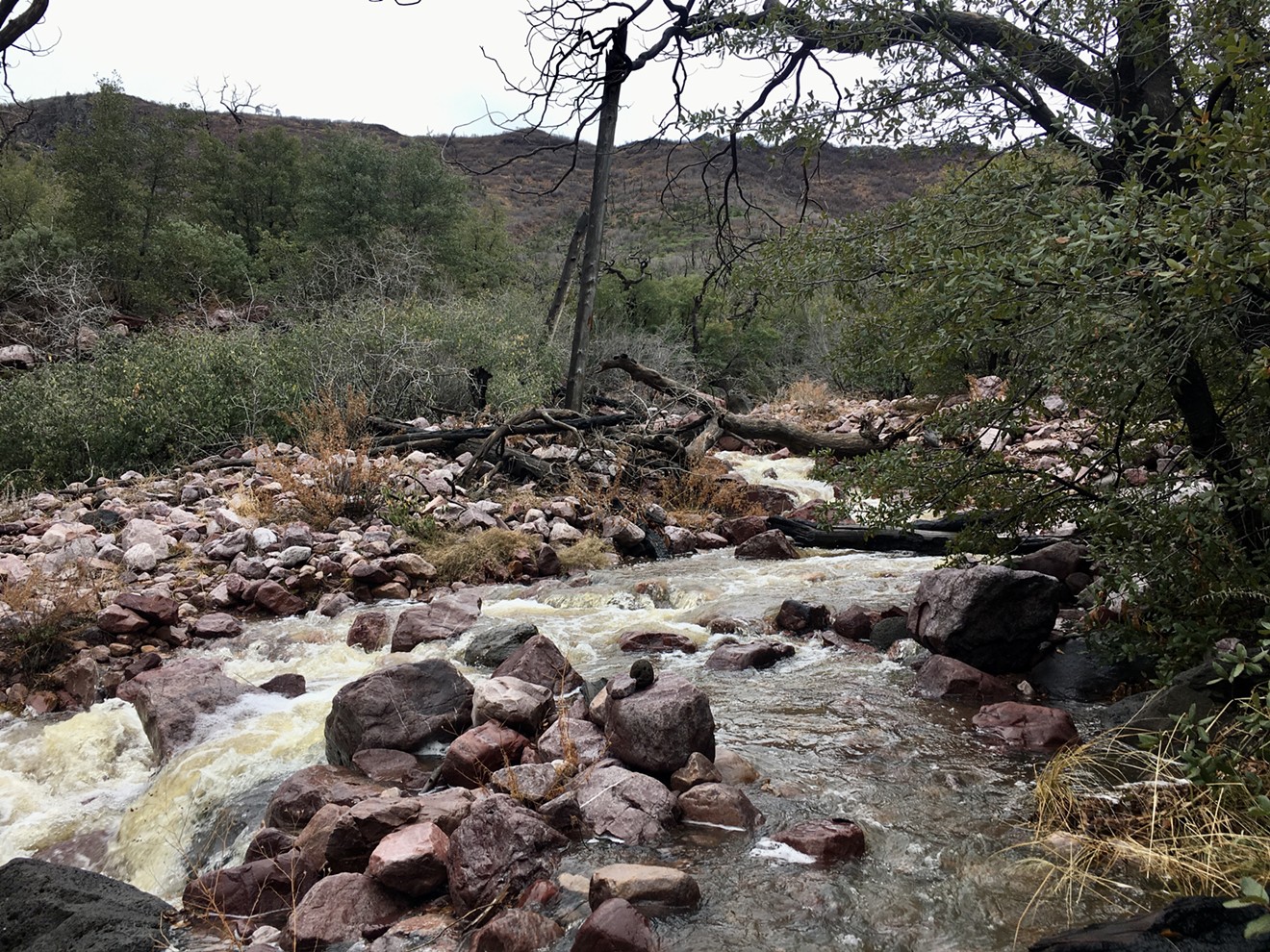In Arizona, curbing that rule, Waters of the United States, eliminates protections for more than 90 percent of waterways — 120,000 miles of intermittent and ephemeral streams, wetlands, and other smaller bodies of water that feed larger ones — under the Clean Water Act, signed in 1972 by President Richard Nixon.
In their formal notice of intent to sue, the groups alleged specifically that the Environmental Protection Agency, which issued the new rule along with the U.S. Army Corps of Engineers, is violating the Endangered Species Act.
The decision to define Waters of the United States more narrowly could affect listed species, but the EPA failed to go through consultation required by the law to ensure that the rule change doesn't threaten those species or their habitat, the groups said.
The group can file the lawsuit 60 days after filing its notice of intent to sue.
"We're trying to be prepared to go to court in April," said Brett Hartl, government affairs director for the Center for Biological Diversity.
EPA's new rule, announced January 23 and expected to go into effect in mid-March, would exclude ephemeral waters, such as washes, that do not flow year-round, plus "millions of acres of rivers, streams, lakes, wetlands, impoundments, and other waterbodies," the groups wrote.
"These waters directly and indirectly provide and support habitat for breeding, feeding, or sheltering for a large number of endangered and threatened species across the nation," they added. The cumulative effects of removing protections for those waters could be devastating to more than 100 species, which they named in their notice.
Among them are the desert pupfish, the Gila chub, the Southwestern willow flycatcher, and the Chiricahua leopard frog.
States in the arid Southwest, like Arizona, will be hardest hit by the change, the groups added in their notice, citing documents from career staff at EPA that were obtained through a Freedom of Information Act request by E&E News in 2018.
Those records revealed that the government's own analysis of its hydrological data showed that about 99 percent of ephemeral streams in the U.S. are in the Arid West, which includes Arizona, Nevada, and parts of surrounding states, and nearly half of intermittent streams are, too.
The proposed new definitions of Waters of the United States "could result in a greater reduction of jurisdiction in Arid West states than in other states," those documents said.
The Trump administration, which so far has rolled back close to 100 environmental rules, claims that the narrower definition "eliminates federal overreach," reduces confusing and burdensome regulations, and will be a boon to business.
“EPA and the Army are providing much needed regulatory certainty and predictability for American farmers, landowners and businesses to support the economy and accelerate critical infrastructure projects,” EPA Administrator Andrew Wheeler said in January.
Arizona's key industries have lauded the decision.
"The new rule will protect the nation’s water supplies and environment while allowing farmers and ranchers to get their job done. This is a win-win for consumers and communities!” Stefanie Smallhouse, president of the Arizona Farm Bureau, said in a statement in January.
The Homebuilders Association of Central Arizona called it "an important victory."
Although the grounds for the planned lawsuit lie specifically with the Endangered Species Act, the conservation groups who plan to sue the administration also excoriated the rule change more broadly.
"EPA has removed from itself and citizens any meaningful ability to protect federal waterways from discharges of untreated toxic, biological, chemical, and radiological pollutants."
"EPA has removed from itself and citizens any meaningful ability to protect federal waterways from discharges of untreated toxic, biological, chemical, and radiological pollutants; from being dredged and filled with impunity; and from being afforded the most fundamental human health and ecological safeguards of the [Clean Water Act]," they wrote.
The groups pointed out, too, that the EPA finalized the rule despite the fact that its own Scientific Advisory Board, staffed with 41 scientists, said that it "decreases protections for our Nation's waters" and "neglects established science pertaining specifically to the connectively [sic] of ground water to wetlands and adjacent major bodies of water."
As an example, the groups cited Arizona.

A map from the Center for Biological Diversity shows the extent to which Arizona will be affect by the Trump administration's rollback of Waters of the United States.
In addition to the fish, amphibians, birds, butterflies, and other species, as many as 3.2 million people in Arizona also rely on those waterways for drinking water, by one estimate.
With federal protections scaled back, waters in Arizona are now at the mercy of the state Department of Environmental Quality, which has acknowledged that "the new definition creates a gap in protection for many Arizona waterways."
It says it supports a "'local control approach' at the state level to protect Arizona’s important and precious water resources," but it is still working on developing that approach. Stakeholder meetings are scheduled to begin this week to gather input.
Erin Jordan, a spokesperson for ADEQ, said the agency is still reviewing the rule.
Hartl, from the Center for Biological Diversity, was skeptical.
"I don't expect ADEQ to do anything," he said, citing the agency's history. "They were looking at it a little bit in the last year," he said, referring to questions about building a regulatory structure to fill in the gaps left by the rollback, "but at the end of the day, they basically declined."
The State Legislature also could enact laws to protect Arizona waters, but it's unlikely to do that, Hartl added. He lamented the gutting of the Clean Water Act, which effectively says that people don't have the right to pollute waters, he said.
"If half the nation's waters overall, and 95 percent or more in the Arid West, are no longer covered by the Clean Water Act, then people are free to pretty much do whatever they want," Hartl said. "We'll undo all of that progress that was made over the last 50 years."













